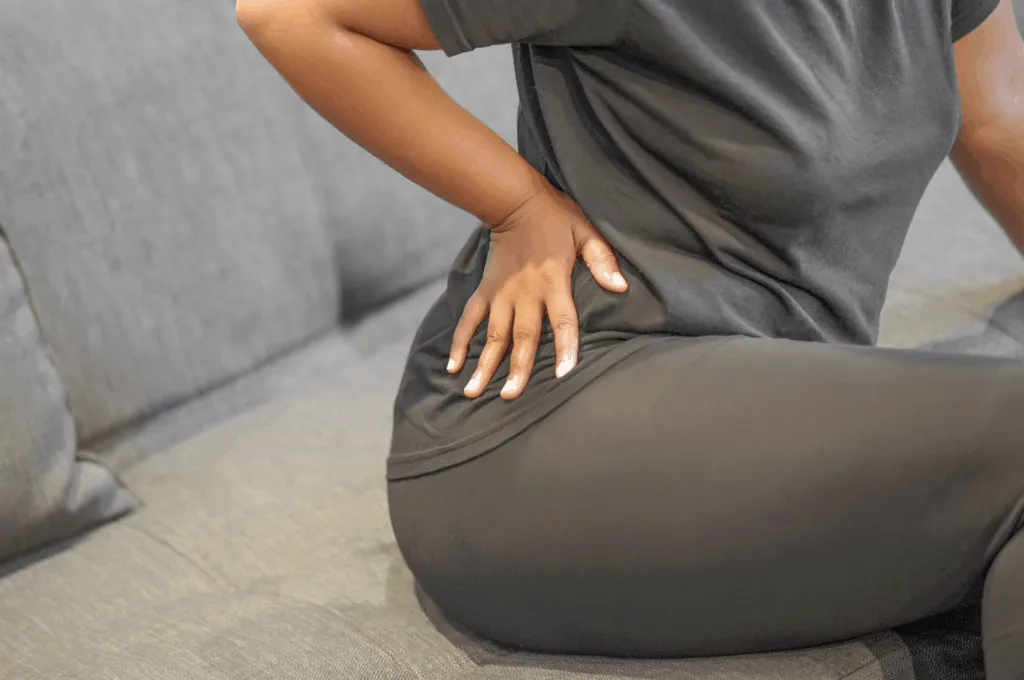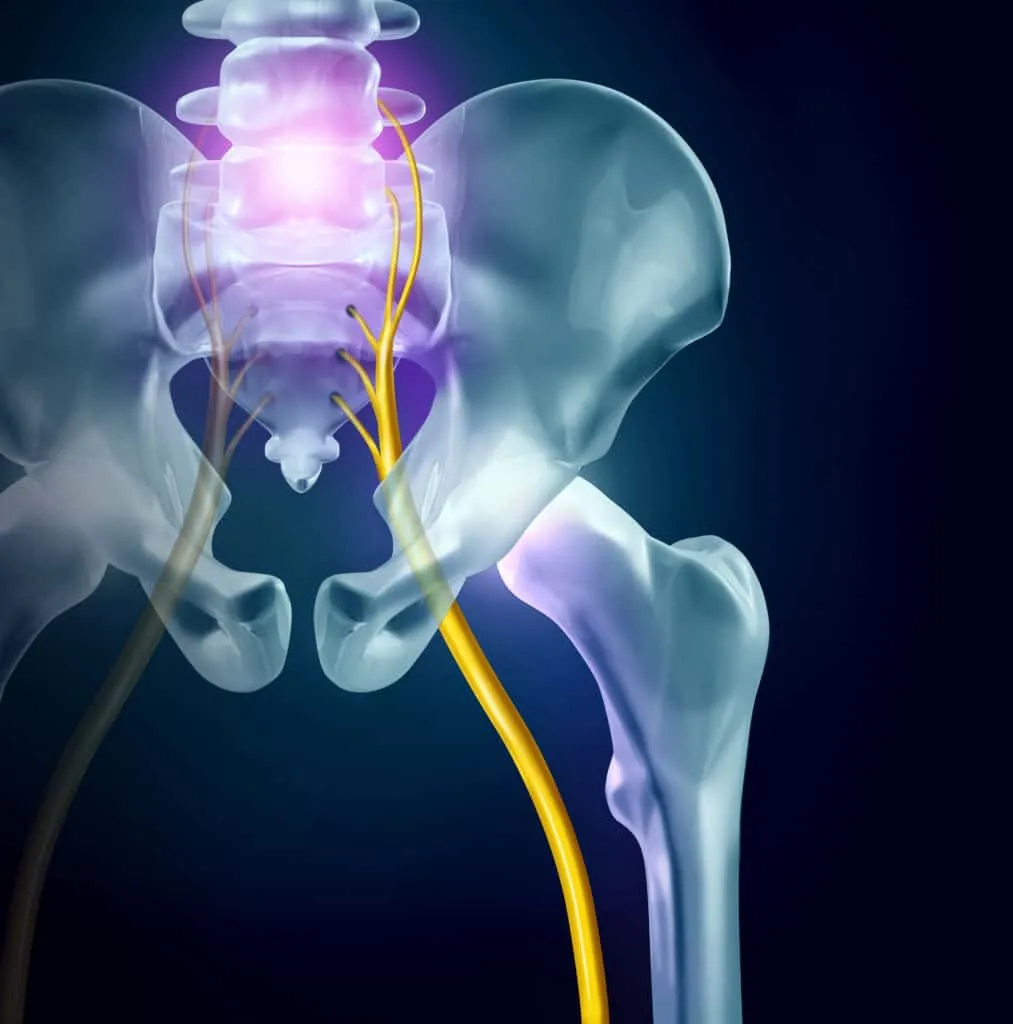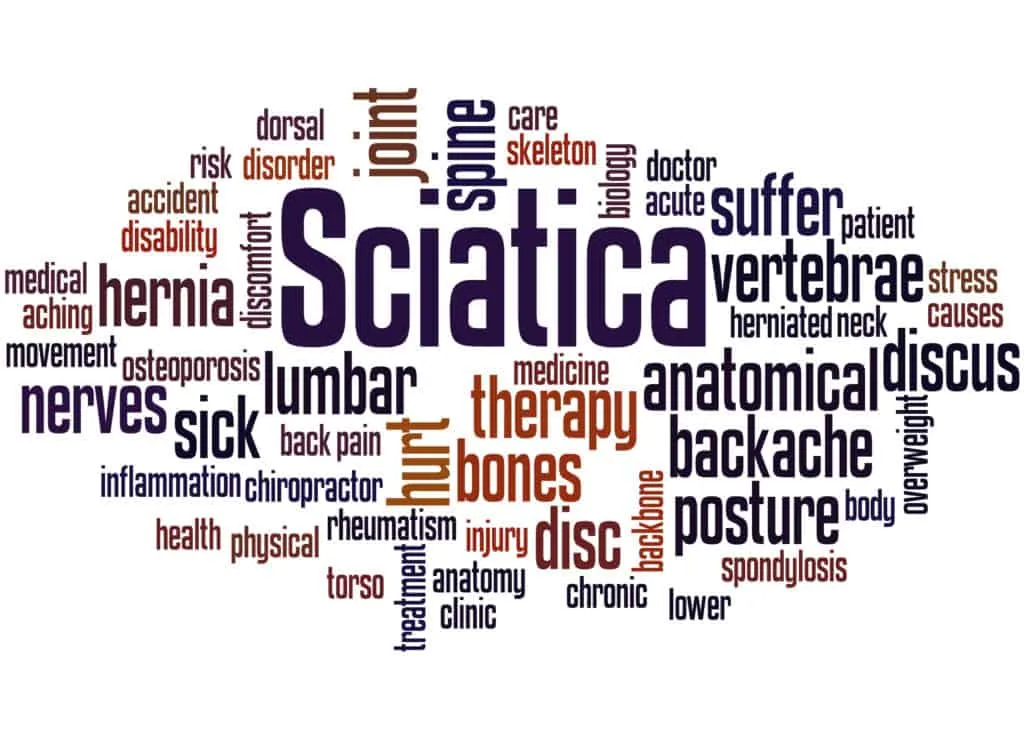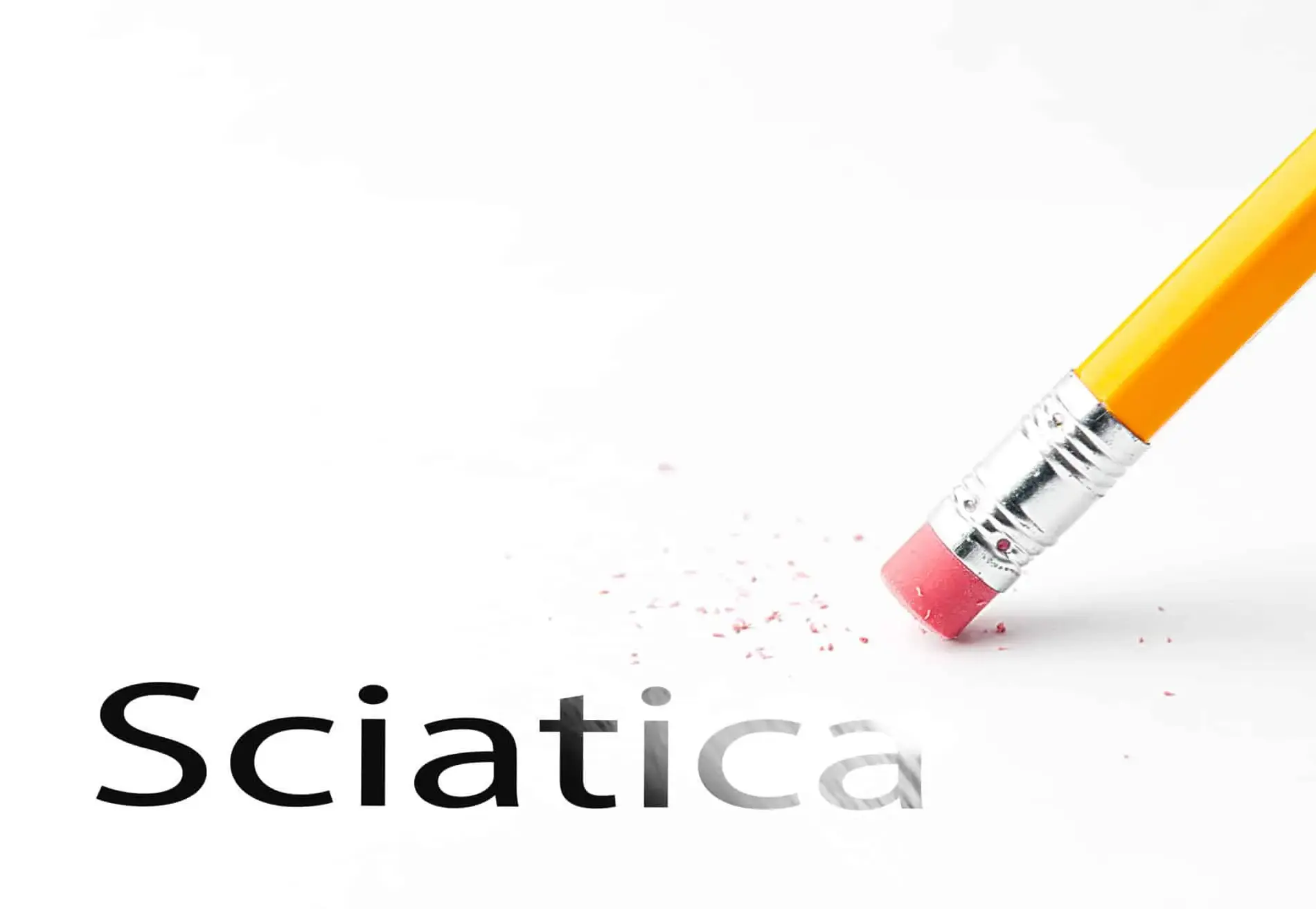In Knoxville, the Simply Physio clinic has been inundated over the last week by people suffering from back pain.
Except, there’s a plot twist. Our patients haven’t been suffering from just any old type of back pain; they have bravely endured the most severe back pain of all – Sciatica.
The most severe? It sure is. And those aren’t just our words, but the words of other leading specialists in our field.
Ask anyone who has tolerated sciatic torment to describe their chronic pain, and you’ll get one word; horrific!
If you have been lucky enough to dodge the harsh world of sciatica, then you may not be familiar with the term. Basically, you would recognize sciatica by developing severe pain that runs down the back of your leg and into your foot.
When you have sciatica, sitting down can be one of the most painful experiences imaginable. This is unfortunate when considering how much time we often spend sitting down, especially when balancing life’s activities with constant and exhausting pain.
It’s double as unfortunate, as sitting only makes sciatica worse. In fact, excessive sitting is the underlying cause of most people’s sciatic origins.
Ask yourself, how much sitting have you been doing lately?
Chances are, it’s a lot.
People simply aren’t keeping an active lifestyle at the moment, courtesy of the COVID-19 pandemic and subsequent lockdowns. Throw in all the cold and wet weather we’ve had lately – is it any wonder as to why people have been cooped up in their homes?
Over the past year, we’ve all been indoors for prolonged stretches of time. And what do we do when staying at home? We sit! Whether that be at your desk, in front of your computer, on the couch, on the bed, or when watching TV or playing video games, you’ll be seated for hours at a time.

So how can sitting be so detrimental to your health? Boiled down, sitting adds pressure to your back and onto your sciatic nerve. While our bodies can cope with elongated periods of ill-posture and stooped sitting, it’s only a matter of time before a disc at the bottom of our back gives way.
It can be as nasty as it sounds. When the fluid inside your disc seeps out and entangles with the sciatic nerve that runs down your leg, the pain can become excruciating. This pain is known as sciatica.
The condition rarely involves both legs; sciatica typically involves only one leg at a time. Not that you’d want the discomfort in either leg, if you can avoid it. Direct injury to the nerve is rare, but as the body’s largest nerve, there’s plenty of opportunity for the nerve to suffer harm when it has excess pressure applied or tension accumulates.
Sciatica can result in a pins-and-needles sensation that creeps across your foot, alongside an overwhelming feeling of cold. A bit like dipping your foot in chilled water. However, this is nothing when compared to the pain that sciatica inflicts. Sadly, it’s often so painful that nothing in the way of medication can ease it.
As sciatica is such a common problem, and because so many people suffer for far too long, we felt it was time to cover some top tips for relieving and resolving sciatica.
This article has got you covered with some tips that can help you fix sciatica fast. Yet, before we delve in and explore the topic, there are a few things you need to understand beforehand. For example, what is sciatica? What causes it? And does the condition produce characteristic pain?
Funny you should ask…
What Are The Characteristics of Sciatica Pain?

People who develop sciatica elaborate on their symptoms differently. There seems to be only one common feature – ‘intensified pain’. Many describe it as sharp-shooting with jolts of pain, while others report it as burning, electrifying, and somewhat piercing.
Poor posture and certain body positions will increase sciatica. Many people will complain of pain when they try to stand up from sitting, bending over, or just sitting.
The pain may be continuous or appear in bouts with enough intensity to stop you dead in your tracks. It is also ubiquitous for sciatica to be associated with numbness and/or weakness in the back of the leg involved.
Risk Factors of Sciatica

- Age: Sciatica is more prevalent in the middle-age years (40-60 years); some natural wear and tear processes begin to occur in the spine, resulting in a more vulnerable disc that can be prone to bulging and producing pressure on the nerve.
- Occupation: If you have a job requiring heavy lifting, you may suffer from sciatica, especially if your lower body is not strong enough to support the lift or with improper lifting mechanics.
- Bad posture practice: You may be completely fit and healthy physically, but if you don’t focus on good posture, especially while working out, you are prone to sciatica.
- Physically inactive: Prolonged sittings and not exercising will weaken your “core” muscles and increase the risk for sciatica.
- Previous injury: If your spine has experienced trauma in the past, you will be at higher risk of developing sciatica.
- Arthritis: Osteoarthritis of the spine creates less space for the nerves to exit from your spinal cord. If this space is reduced too much- the sciatic nerve can get pinched.
What Causes Sciatica?

It is usually caused due to indirect injury, but sometimes a direct injury can occur (for example, falling from a height) to the nerve. Typical conditions are described below:
- Spinal stenosis: Stenosis refers to the narrowing of space within the spine. It results in compression of the nerves that emerge out of the active part of the spine. Spinal stenosis occurs in the cervical (neck) and lumbar (lower back) regions predominantly, which manifest as severe pain in the neck/shoulders and/ or lower back/legs, respectively.
- Herniated discs: Another significant cause is a herniated disc. The spinal cord consists of different structures, and one of the unique parts is the spinal disc, which is located between two vertebrae. They are essential since they support the entire spinal column and keep it in position. These discs contain fluid and help to cushion the spine. A herniated disc usually occurs when a piece of the disc tears and bulges out, compressing the adjacent structures (commonly nerves).
- Tumors: Tumorous masses of the lower spine may invade the sciatic nerve and cause symptoms.
- Spondylolisthesis: A condition in which one vertebra (bone of the spine) slips out of place onto the vertebra below it and can compromise the sciatic nerve.
- Piriformis syndrome: The piriformis is a band-like muscle located in the buttocks near the hip joint. The condition is a neuromuscular disorder that results in tightening of the muscle, putting pressure on the sciatic nerve, and compressing it.
- Cauda equina syndrome: It is a rare condition. Cauda equina refers to the end part of the spinal cord, which contains bundles of nerve fibers. The syndrome affects these fibers and causes pain down the leg and other symptoms.
5 Tips To Treat Sciatica Non-Surgically
It is recommended to treat sciatica as soon as possible to prevent the worsening of the symptoms. Pain can last from as little as 4 – 6 weeks (when treated early) or can last for years when ignored or when treated with the wrong intervention.
Conservative management of sciatica is always preferred over surgery. Surgery is only indicated when the underlying cause is severe and hasn’t improved with conservative measures.
1. Application Of Hot/Cold Packs
Activities that can be done at home easily include the application of hot/cold packs on your lower back and buttocks region, which helps relieve the pain for a while. Ice helps reduce inflammation, and heat will increase the blood flow to the area, which speeds up the healing process. Regular application with consistency helps reduce the pain.
2. Get Out Of Bed
No evidence supports that bed rest reduces sciatica; instead, it can worsen the underlying cause, such as spinal stenosis or herniated disc. It is recommended to stay as active physically as possible to avoid the progression of symptoms.
3. Forward Pigeon Pose
One of the most recommended stretches by physical therapists is a forward pigeon pose. You can check out our video on how to successfully pull off the Forward Pigeon Pose. The posture requires you to kneel on the floor on all four limbs.
Extend your right leg and move it forward in front of your body on the floor, preceded by straightening your spine.Your lower leg should be placed horizontal to the body, with one leg flexed forward and the front knee directly in line with the hip. The back foot extends straight out in line with the hip while you set your arms extended ahead in a comfortable position, with shoulders relaxed away from the ear. If this stretch is too difficult- then skip and try Tip # 4.
4. Practice Knee-To-Opposite-Shoulder Stretch
Get yourself to do a knee-to-opposite-shoulder stretch routinely. This can alleviate your sciatica pain by loosening the gluteal and piriformis muscles, which tend to get inflamed and may exert pressure on the sciatic nerve. Repeat it three times for 20- 30 secs and then switch legs. You can watch a demonstration of the knee-to-opposite-shoulder stretch with our sciatica stretches video.
5. Walk Regularly
Walking while you have sciatica is a practical approach to relieve the symptoms because bed rest typically worsens symptoms. Regular walking is linked with the release of pain-fighting chemicals in your body, thus reducing pain and inflammation. Try to keep your spine in a neutral position with the head positioned on the top of your spine and ears above the shoulders. It is usually recommended to walk at a slow pace and take shorter steps to begin. Bad walking posture may result in worsening of the symptoms by further aggravating the spinal stenosis or herniated-disc conditions, so don’t continue if your symptoms worsen.
Summary

If you don’t know what to do, or have received poor advice, sciatica pain can be confusing. Because of those reasons, many people end up accepting that sciatica pain is just part of their life. We’ve heard people talk about how ‘it is just part of getting older’. We don’t feel this is true, and you don’t have to just accept it!
We are here to help you. If you would like to speak to a sciatica pain expert, we invite you to arrange a complimentary, no-obligation phone call with our expert physical therapists.
Combine all the “tips” in this blog with a trip to see the “hands-on” physio, and you can start experiencing the relief from pain and stiffness that you are so earnestly seeking.
Are you looking for more tips? If so- then be sure to request our Sciatica Pain Guide: 10 Best Physical Therapy Secrets to Solving Sciatica Pain.
Don’t forget, you can view our stretching video through the Simply Physio Youtube Channel.



